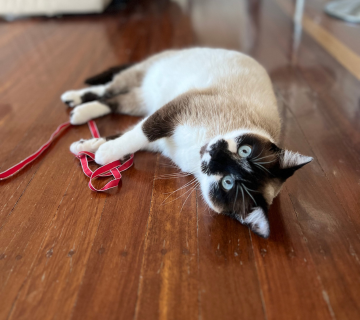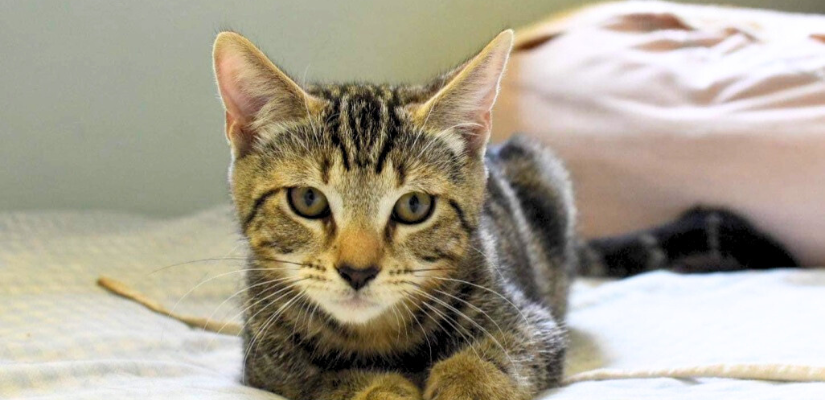Cat owners often marvel at the beauty and diversity of their feline friends’ fur. The array of colours and patterns can be mesmerising, but have you ever wondered why your cat’s fur changes over time?
Let’s explore all you need to know about cat hair, uncovering the science behind it and understanding the various factors that contribute to changes in colour and pattern.
Do Feline Fur Patterns and Colours Shift?
The Science: How Does Cat Hair Work?
Melanin is the key player in determining fur colour. This pigment is produced by melanocytes, specialised cells located in the hair follicles. Eumelanin, responsible for black or brown colours, and pheomelanin, responsible for red and yellow hues, are the two main types of melanin influencing the cat’s coat colouration. The types and amount of melanin present are usually based on genetics.
Hair follicles are miniature organs in the skin responsible for hair growth. In the context of cat fur, these follicles are not only factories for hair production but also intricate colouration studios. The activity of melanocytes within the hair follicles contributes to the deposition of melanin in the growing hair, determining its eventual colour.
The hair shaft itself is the visible part of the hair above the skin’s surface, which contributes to the variation in fur lengths and textures across cat breeds. For example, a cat with a short, dense coat has hair shafts that are closer together, creating a smooth and sleek appearance.
From Kittens to Adults
A cat’s journey from kittenhood to adulthood can involve remarkable changes in their fur. Kittens may display different colours than their final coat, and patterns often develop as they grow.
A kitten born with a predominantly white coat might gradually develop dark points, revealing the emergence of a Siamese or Himalayan pattern. Tabby kittens initially covered in faint stripes or spots might see markings intensify as they mature, creating the distinctive tabby pattern.
The evolution of such patterns is equally fascinating. For example, classic tabby markings, like the “M” on the forehead or the swirling patterns on the sides, often become more defined and pronounced as the cat matures.
Aging, Health Issues and When to Call a Vet
As cats age, they rarely display a uniform greying pattern like humans. Instead, the transformation is often subtle and scattered. One common change is the appearance of silver or white hairs, particularly around the face, giving rise to the endearing term “whisker frost”. This effect occurs as a result of a reduction in melanin production.
Diet also plays a part. The saying “you are what you eat” holds true for cats too. Changes in coat colour, texture, or density may signal underlying dietary deficiencies. For instance, a lack of essential fatty acids, particularly omega-3 and omega-6, can result in dry and flaky skin, affecting the quality of the coat. Regularly assessing your cat’s diet and ensuring it aligns with nutritional needs is a proactive approach to maintaining a luxurious and healthy fur coat.
Beyond dietary considerations, alterations in a cat’s fur can serve as a valuable indicator of its overall health. While some changes may be innocuous, others could be red flags for underlying health issues. Potential problems may be signalled by excessive shedding, bald patches, or changes in colour. Still, considering the reasons for fur changes we’ve already discussed, it’s unlikely that a major issue is at play unless there are other signs.
So, when do you take your cat to the vet based on fur pattern and colour changes? Your cat will usually be clear if something is wrong: fatigue, vomiting, and meowing excessively are just a few examples. If you see these changes in your cat along with the fur shifts, get in touch with your vet for a checkup.
Bonus Notes
- Genetics and Breeds:
- Different genes dictate various aspects of a cat’s coat, from colour to pattern. Examples include the Agouti gene, responsible for banding in hairs, and the Tabby gene, creating distinctive tabby patterns.
- Seasonal Changes:
-
- Winter coats can become denser to provide better insulation against the cold.
- Some cats might shed more in warmer months, adapting to the changing temperatures.
- Stress and Environmental Factors:
-
- Moving to a new home, the introduction of a new pet, or changes in the household can trigger stress-related fur changes.
- Implementing calming strategies, like providing safe spaces and maintaining routines, contributes to a healthier coat.
- Grooming Practices:
-
- Different coat types require specific grooming practices to prevent matting and tangling.
- For long-haired breeds like Persians, daily brushing is crucial to prevent knots and reduce shedding.
Whether witnessing transformations from kitten to adult, understanding the impact of diet, or navigating the intricacies of genetics, each revelation about cat fur adds to our appreciation for these enigmatic creatures. As you observe your cat’s fur undergo its own narrative, remember that it’s not just about external beauty: it’s a reflection of their health, happiness, and the shared moments that make the feline-human bond so special.

Are you looking to adopt a pet or donate to a pet rescue organisation? Georgie and Cindy from Large Hope SEO foster cats and kittens on the Sunshine Coast in Australia. If you’re local, get in touch to discuss adopting from the rescues. See cats and kittens available for adoption or donate so we can save more kittens.
 seolounge
seolounge